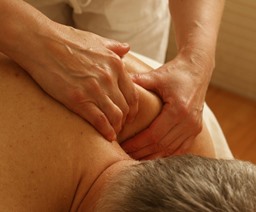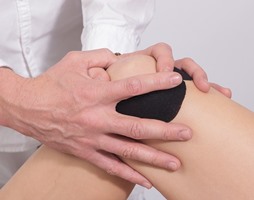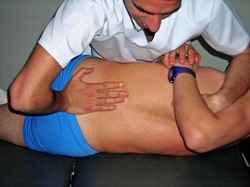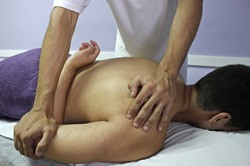How to Pick the Best Massage Therapy Training Course near Street Maryland
 Selecting the right massage therapy school near Street MD is a critical first step toward launching a fulfilling new career as a massage therapist. As you have no doubt concluded, who wouldn’t want to work in an occupation where the primary goal is to help patients function and feel better? Massage therapists are employed in a wide range of locations, such as hospitals, day spas, health clubs and even aboard cruise ships! However prior to starting a career in this specialty of alternative medicine, receiving the proper training and licensing is a must. And remember that massage therapist schools are not all alike. When making your evaluations, it’s important that you research all aspects of the schools you are reviewing and not just the cost or convenience of the locations. We will provide a few fundamental tips that you need to incorporate into your review process when choosing a massage therapy school.
Selecting the right massage therapy school near Street MD is a critical first step toward launching a fulfilling new career as a massage therapist. As you have no doubt concluded, who wouldn’t want to work in an occupation where the primary goal is to help patients function and feel better? Massage therapists are employed in a wide range of locations, such as hospitals, day spas, health clubs and even aboard cruise ships! However prior to starting a career in this specialty of alternative medicine, receiving the proper training and licensing is a must. And remember that massage therapist schools are not all alike. When making your evaluations, it’s important that you research all aspects of the schools you are reviewing and not just the cost or convenience of the locations. We will provide a few fundamental tips that you need to incorporate into your review process when choosing a massage therapy school.
What is Massage Therapy?
 As mentioned in the introduction, massage therapy is a holistic form of healthcare in Street MD that helps people feel and function better. The massage therapist manipulates skin, muscles and tissue to reduce stress and relieve tension and pain in their patients. Swedish, or Classic Massage, is the type of massage that most people think of when discussing massage therapy, and most massage therapy schools teach it as their primary form of massage. However, there are many other types of massage that programs may or may not include within their course of instruction. Following are just a few examples.
As mentioned in the introduction, massage therapy is a holistic form of healthcare in Street MD that helps people feel and function better. The massage therapist manipulates skin, muscles and tissue to reduce stress and relieve tension and pain in their patients. Swedish, or Classic Massage, is the type of massage that most people think of when discussing massage therapy, and most massage therapy schools teach it as their primary form of massage. However, there are many other types of massage that programs may or may not include within their course of instruction. Following are just a few examples.
- Neuromuscular Therapy Massage
- Deep Tissue Massage
- Sports Massage
- Shiatsu Massage
- Thai Massage
- Hot Stone Massage
- Pregnancy Massage
Professionals that work in massage therapy in Street MD should be referred to as massage therapists. From time to time one may hear them called a masseuse or a masseur, which refers to a female or a male massage practitioner. However, these terms generally carry a negative connotation among the general public and professionals alike and should be avoided.
Click Here to Get Free Information on Massage Therapy Schools Near You!
Massage Therapy Training Requirements
 Most schools offering massage therapy require that the enrollee have a high school diploma or its equivalent to qualify. Programs can range in length from several months for a Certificate or a Diploma to as long as two years for an Associate’s Degree. The lengths of the programs will also vary by State based on the number of hours required for licensing. Another factor that may also influence the program length is whether classes are offered in Street MD during the day or in the evening. Also, an Associate Degree in Massage Therapy may have general education requirements and are often transferable into a related Bachelor’s Degree Program. Once you have received your Certificate or Degree, the education does not end there. The amount and type of continuing education you will need to complete will depend on the State where you are licensed. Some states require both a certain number of hours of continuing education as well as specific education in subjects such as HIPAA compliance or ethics.
Most schools offering massage therapy require that the enrollee have a high school diploma or its equivalent to qualify. Programs can range in length from several months for a Certificate or a Diploma to as long as two years for an Associate’s Degree. The lengths of the programs will also vary by State based on the number of hours required for licensing. Another factor that may also influence the program length is whether classes are offered in Street MD during the day or in the evening. Also, an Associate Degree in Massage Therapy may have general education requirements and are often transferable into a related Bachelor’s Degree Program. Once you have received your Certificate or Degree, the education does not end there. The amount and type of continuing education you will need to complete will depend on the State where you are licensed. Some states require both a certain number of hours of continuing education as well as specific education in subjects such as HIPAA compliance or ethics.
Massage Therapist Licensing
Once you have graduated from an accredited massage therapy school, you will then need to become licensed in the State where you will be practicing. The Massage & Bodywork Licensing Examination (MBLEx), is a test controlled and administered by the Federation of State Massage Therapy Boards (FSMTB) and is required by most States as part of the licensing process. Some States have their own or additional exams, so check with your State prior to enrolling in a massage therapy program. If you do not pass the MBLEx in the first attempt, you can take it again after 30 days but must pay an additional exam fee. Once licensed, you will need to maintain it in most states, which means paying a renewal fee and satisfying renewal requirements. As previously mentioned, renewal typically requires a certain number of hours of continuing education be completed. And if you should move to another State, you will need to get licensed in that new State as well. Every State regulates massage therapy differently, so it is not safe to assume that you will automatically qualify for licensing. Check with your new State before moving to confirm that you meet the requirements to legally practice there.
Questions to Ask Massage Therapist Courses
 Before you choose a massage therapist school, there are some important questions that you need to ask about the programs you are considering. As previously mentioned, the location of the school is important, particularly if you will be commuting to classes from Street MD. And of course the total cost, including tuition, books and all training materials will also be an important factor. But beyond those basic qualifications, following are some questions you should ask so that you have all of the facts before selecting a massage therapist degree program.
Before you choose a massage therapist school, there are some important questions that you need to ask about the programs you are considering. As previously mentioned, the location of the school is important, particularly if you will be commuting to classes from Street MD. And of course the total cost, including tuition, books and all training materials will also be an important factor. But beyond those basic qualifications, following are some questions you should ask so that you have all of the facts before selecting a massage therapist degree program.
- Is the School Accredited? Accreditation may be required for licensing as well as student loans or financial aid. It also helps to ensure that the program meets acceptable levels of quality. Some Street MD employers also prefer job candidates from accredited schools.
- Does their Curriculum Comply with EALP Standards? Entry-Level Analysis Project (EALP) standards were created by an association of massage organizations to define minimum standards for preparing massage school graduates for entry-level professional work.
- What Massage Therapy Programs are Available? Find out if the type of program you are interested in is available, such as an Associate Degree in Massage Therapy. Also, if you need to attend evening classes near Street MD make sure that they are offered as well.
- What Types of Massage Therapy are Taught? As previously mentioned, most massage therapy schools teach Swedish Massage. However, the better programs include multiple types of massage therapy. Make sure that the program you choose includes those you are most interested in.
- Is Financial Aid Available? To qualify for federal financial aid or a student loan, the school will need to be accredited by a national accrediting organization. Find out from the schools you are considering what they offer in aid or if they assist students in obtaining funding from other sources.
- How Long has the School Existed? One indication that a school provides a quality education is longevity. However, all schools had to start from day one, and many fine schools are relatively new. So use this as one of several qualifications when comparing schools.
- Does the School have a Job Placement Program? Find out if the schools have job placement programs and what their placement rates are. Ask if they assist with such skills as how to interview for a position and how to prepare a resume.
- Is Plenty of Hands-On Training Provided? This includes classroom training as well as placement in internship programs. The best massage therapy schools make sure that students have plenty of time to practice what they learn so they can develop their skills and be corrected when necessary.
- What is the Background of the Faculty? Find out what the experience and credentials are of the teaching faculty. Speaking with schools’ faculty in person can also provide valuable information. Before applying, arrange to take a tour of the school and talk with staff members and students if permissible. Schools may also have Open House events for prospective students.
Massage Therapy College Courses Street MD
 Good luck as you embark on your journey to begin a career as a professional massage therapist. As with all things worth achieving, it will take a lot of hard work and dedication to succeed. You originally came to this website because of your interest in Massage Therapy College Courses and wanting to get more information on the topic How Much Does It Cost To Become A Massage Therapist. However, by following the suggestions contained within this article, you will have an excellent opportunity for success by choosing the right massage therapist degree program. And with the right education you will soon become a professional massage therapist servicing the Street Maryland area.
Good luck as you embark on your journey to begin a career as a professional massage therapist. As with all things worth achieving, it will take a lot of hard work and dedication to succeed. You originally came to this website because of your interest in Massage Therapy College Courses and wanting to get more information on the topic How Much Does It Cost To Become A Massage Therapist. However, by following the suggestions contained within this article, you will have an excellent opportunity for success by choosing the right massage therapist degree program. And with the right education you will soon become a professional massage therapist servicing the Street Maryland area.
Other Massage Therapy Locations in Maryland
Baltimore–Washington Parkway
The Baltimore–Washington Parkway (also referred to as the B–W Parkway) is a highway in the U.S. state of Maryland, running southwest from Baltimore to Washington, D.C. The road begins at an interchange with U.S. Route 50 (US 50) near Cheverly in Prince George's County at the D.C. border, and continues northeast as a parkway maintained by the National Park Service (NPS) to MD 175 near Fort Meade, serving many federal institutions. This portion of the parkway is dedicated to Gladys Noon Spellman, a representative of Maryland's 5th congressional district, and has the unsigned Maryland Route 295 (MD 295) designation. Commercial vehicles, including trucks, are prohibited within this stretch. This section is administered by the NPS' Greenbelt Park unit.[3] After leaving park service boundaries the highway is maintained by the state and signed with the MD 295 designation. This section of the parkway passes near Baltimore–Washington International Thurgood Marshall Airport. Upon entering Baltimore, the Baltimore Department of Transportation takes over maintenance of the road and it continues north to an interchange with Interstate 95 (I-95). Here, the Baltimore–Washington Parkway ends and MD 295 continues north unsigned on Russell Street, which carries the route north into downtown Baltimore. In downtown Baltimore, MD 295 follows Paca Street northbound and Greene Street southbound before ending at US 40.
Plans for a parkway linking Baltimore and Washington date back to Pierre Charles L'Enfant's original layout for Washington D.C. in the 18th century but did not fully develop until the 1920s. Major reasons surrounding the need for a parkway included high accident rates on adjacent US 1 and defense purposes before World War II. In the mid-1940s, plans for the design of the parkway were finalized and construction began in 1947 for the state-maintained portion and in 1950 for the NPS-maintained segment. The entire parkway opened to traffic in stages between 1950 and 1954. Following the completion of the B–W Parkway, suburban growth took place in both Washington and Baltimore. In the 1960s and the 1970s, there were plans to give the segment of the parkway owned by the NPS to the state and make it a part of I-295 and possibly I-95; however, they never came through and the entire road is today designated as MD 295, despite only being signed on the state portion. Between the 1980s and the 2000s, the NPS portion of the road was modernized. MD 295 is in the process of being widened from four to six lanes, with more widening and a new interchange along this segment planned for the future.
The parkway begins at a large hybrid cloverleaf just outside the Washington, D.C. boundary at Tuxedo, Maryland that is maintained by the Maryland State Highway Administration.[1] Two routes converge at the southern and western ends of the interchange: US 50, which heads west into Washington, D.C. to become New York Avenue; and MD 201, which begins at the D.C. line along the northernmost tip of the Kenilworth Avenue Freeway (which continues into the District of Columbia as D.C. Route 295). US 50 continues east from this interchange as the John Hanson Highway, a freeway, and MD 201 continues north on Kenilworth Avenue, a surface road that closely parallels the B–W Parkway to the east past the interchange.[1][4]
Business Results 1 - 10 of 151












